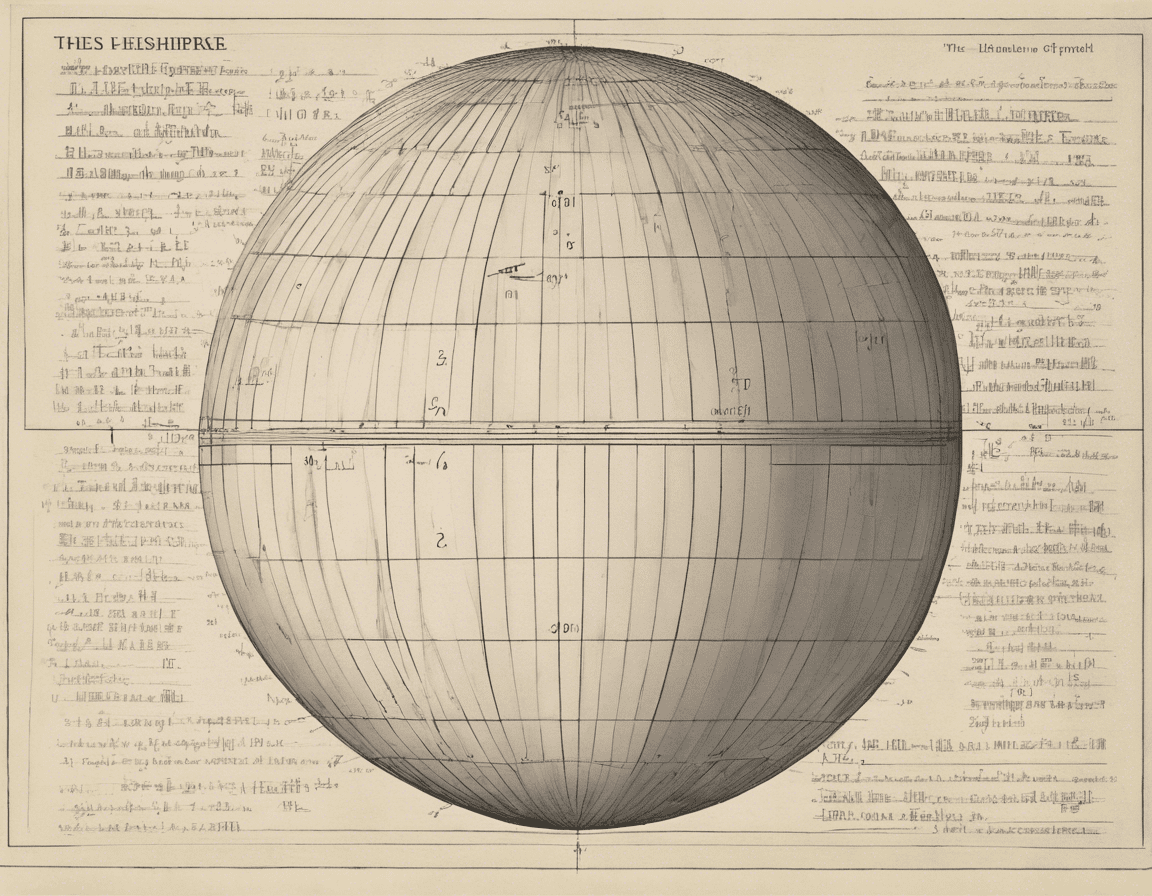Innovate
Calculating the Volume of a Hemisphere: A Step-by-Step Guide

The volume of a hemisphere is a fundamental concept in geometry and can be calculated using specific formulas and procedures. In this guide, we will explore the step-by-step process to determine the volume of a hemisphere, along with relevant equations and examples to solidify your understanding.
Understanding a Hemisphere
A hemisphere is essentially half of a sphere, resembling a dome or half a ball. It has a flat base, which is a circle, and a curved surface that extends upwards. To find the volume of a hemisphere, we need to consider the radius of the base, which is the distance from the center to any point on the circle.
The Volume Formula for a Hemisphere
The formula to calculate the volume of a hemisphere is given by:
[V = \frac{2}{3} \times \pi \times r^3]
Where:
– (V) is the volume of the hemisphere
– (\pi) is a constant approximately equal to 3.14159
– (r) is the radius of the base of the hemisphere
Step-by-Step Guide to Calculate the Volume of a Hemisphere
To find the volume of a hemisphere, follow these steps:
Step 1: Measure the Radius
The first step is to measure the radius of the hemisphere. Ensure that the radius is in the same unit of measurement (e.g., centimeters, meters) as the unit used for volume.
Step 2: Cube the Radius
Next, cube the radius by multiplying it by itself twice. This step is crucial as the formula for the volume requires the radius to be raised to the power of 3.
Step 3: Multiply by (\frac{2}{3}) and (\pi)
After cubing the radius, multiply the result by (\frac{2}{3}) and (\pi). This part of the formula ensures that you calculate two-thirds of the total volume and incorporate the constant (\pi).
Step 4: Calculate the Final Volume
By following the steps above and substituting the radius into the formula, you can determine the volume of the hemisphere accurately. Make sure to include the unit of measurement in your final answer.
Example Calculation
Let’s consider an example where the radius of a hemisphere is 5 cm. To find the volume, we substitute (r = 5) into the formula:
[V = \frac{2}{3} \times \pi \times (5)^3]
[V = \frac{2}{3} \times \pi \times 125]
[V \approx 261.8 \text{ cm}^3]
Therefore, the volume of the hemisphere with a radius of 5 cm is approximately 261.8 cubic centimeters.
Advantages of Knowing Hemisphere Volume
Understanding how to calculate the volume of a hemisphere is beneficial in various real-world applications, such as architecture, engineering, and physics. Knowledge of geometric shapes and their volumes allows for precise calculations and design considerations.
Frequently Asked Questions (FAQs)
- What is the difference between a sphere and a hemisphere?
-
A sphere is a three-dimensional shape with all points equidistant from the center, while a hemisphere is half of a sphere.
-
Why is the formula for the volume of a hemisphere (\frac{2}{3} \times \pi \times r^3)?
-
The formula incorporates the concept of taking two-thirds of the total volume of the corresponding whole sphere.
-
Can the volume of a hemisphere be negative?
-
No, volume is a measure of space and cannot be negative. It is always expressed as a positive value.
-
How is the volume of a hemisphere used in real life?
-
The volume of a hemisphere is crucial in applications like designing domes, calculating storage capacities, and understanding celestial bodies.
-
Is the formula for the volume of a hemisphere the same as that of a cone?
- No, the formulas for the volume of a hemisphere and a cone are different. A cone’s volume formula involves the height and the radius, unlike a hemisphere.
By mastering the calculations and concepts outlined in this guide, you can confidently determine the volume of a hemisphere and utilize this knowledge in various mathematical and practical scenarios.









